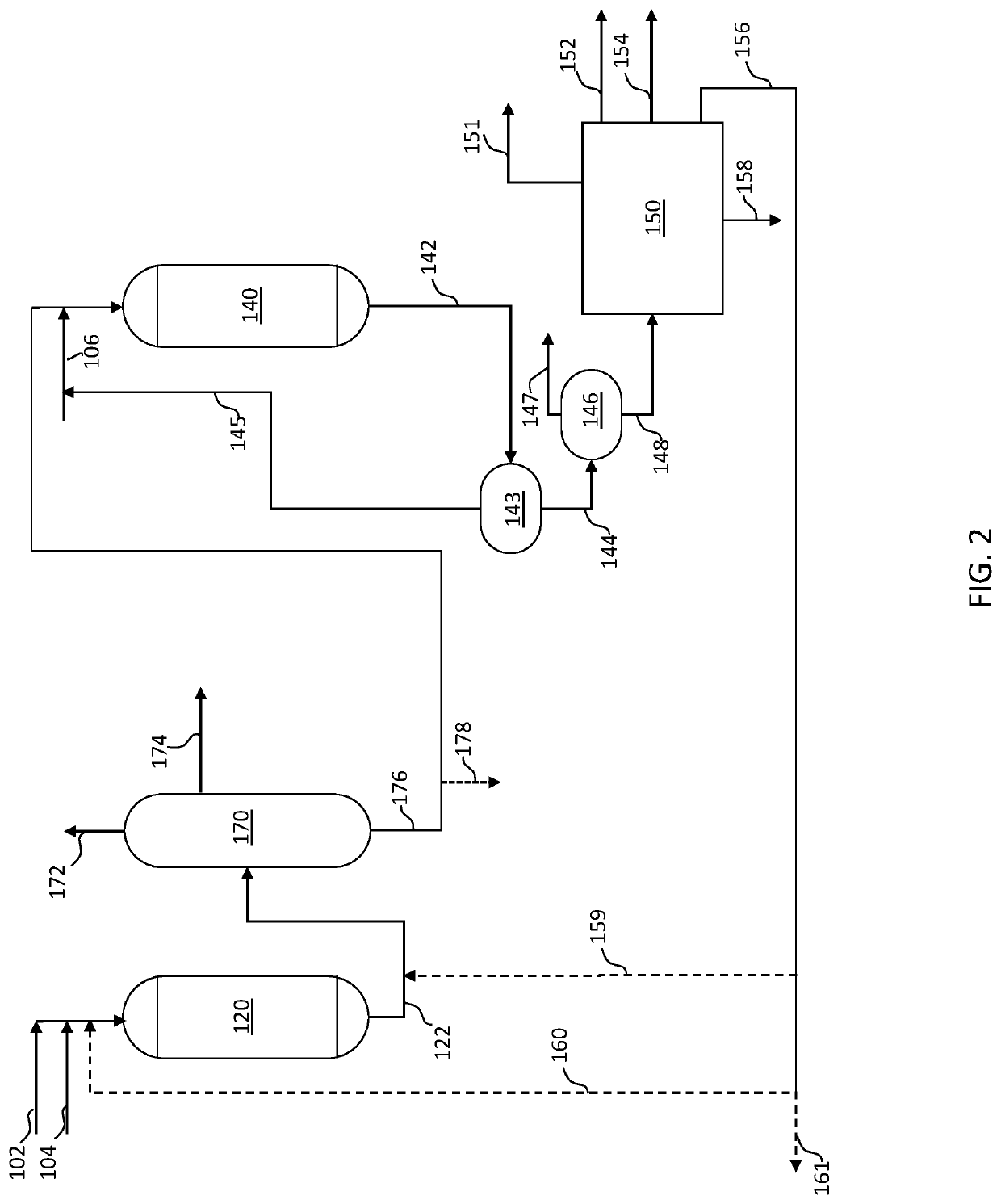Integrated hydrotreating and deep hydrogenation of heavy oils including demetallized oil as feed for olefin production
- Summary
- Abstract
- Description
- Claims
- Application Information
AI Technical Summary
Benefits of technology
Problems solved by technology
Method used
Image
Examples
example 1
[0088]A feedstock blend, containing 15 V % DMO and 85 V % VGO, more particularly 64 V % heavy VGO and 21 V % light VGO, was desulfurized. Properties of the blended feedstock are provided in Table 1. The hydrotreating reaction zone included a catalytic system consisting of amorphous support promoted with metals Ni, W and Mo, and operated at 112.8 bars hydrogen partial pressure, 800 m3 of feedstock over 1000 m3 of catalyst per hour (LHSV 0.8 h−1), a hydrogen to oil ratio of 1,265 StL / L, and at a temperature range of 370-385° C.
[0089]The desulfurized feedstock was hydrogenated and hydrocracked in second reaction zone using a pilot plant hydrocracking unit containing a 5 W % framework-substituted zeolite and 95 W % alumina support with about 0.2 W % Pt as the active metal component, and operated at 80 bars hydrogen partial pressure, 1000 m3 of feedstock over 1000 m3 of catalyst per hour (LHSV 1 h−1), a hydrogen to oil ratio of 1000 StL / L, and at temperature range of 300-360° C. The mate...
example 2
[0094]Advanced Catalyst Evaluation (ACE) tests were conducted using hydrogenated vacuum gas oil as a fluidized catalytic cracking feed. The test was conducted with the USY zeolite catalyst including an additive (10% of the total catalyst mass). The additive is a commercially available ZSM-5 based additive to enhance the propylene yields. The tests were carried-out at 600° C., suitable for FCC propylene production, using a catalyst to oil ratio of 4:1 and at a residence time of 60 seconds. Liquid and gas products were collected and analyzed using gas chromatography. Conversion and products yields were calculated on mass basis.
[0095]After completion of the ACE tests, the catalyst sample was collected from the testing reactor and the amount of solid coke deposits was measured. Gas products were analyzed for the following components: hydrogen, methane, ethane, propane, propylene, iso- and normal-butane, and butenes. Liquid products were analyzed for the following components: gasoline, w...
PUM
 Login to View More
Login to View More Abstract
Description
Claims
Application Information
 Login to View More
Login to View More - R&D Engineer
- R&D Manager
- IP Professional
- Industry Leading Data Capabilities
- Powerful AI technology
- Patent DNA Extraction
Browse by: Latest US Patents, China's latest patents, Technical Efficacy Thesaurus, Application Domain, Technology Topic, Popular Technical Reports.
© 2024 PatSnap. All rights reserved.Legal|Privacy policy|Modern Slavery Act Transparency Statement|Sitemap|About US| Contact US: help@patsnap.com









